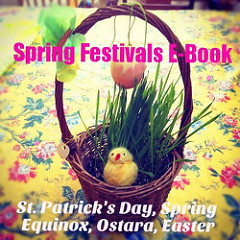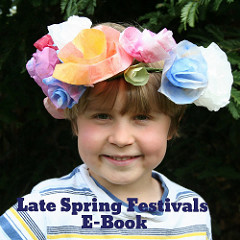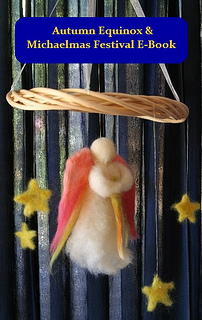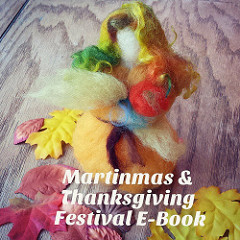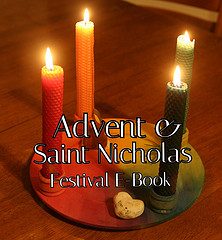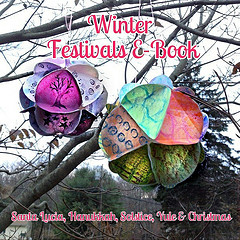Last year, I managed to throw together a tiny Solstice celebration. At the last minute, I invited Theresa and Greg and Phoebe over for dinner. I decorated the table with a gold lamé and served only yellow foods (butternut squash soup, oranges, summer squashes cut into disks and sautéed, chicken with a lemon sauce, sparkling cider, and probably other stuff I don’t remember). We had a lovely, silly time, subtly worshipping the sun and its return.
Today I don’t have any such thing planned, but maybe I’ll go to the grocery store for some oranges or something.
Over the course of this month, we’ve been observing Advent, à la Waldorf schools and Anthroposophists rather than Catholics/Christians. The difference is slight, however. We have an Advent Wreath (a real evergreen wreath) and in the center we placed a Celtic-style candleholder that was a gift from Flonkbob (and Chilipantz?) many years ago. Although the candleholder is not a ring, per se, it features three outer candles with a place for one elevated candle in the center. It’s beautiful and works nicely as the symbolic equivalent of the four weeks leading up to Solstice/Christmas, with the fourth being the prominent one signifying the birth of the Sun/Christ. (The Advent wreath we had when I was growing up was a ring, but in the Catholic tradition, we used 3 purple candles and 1 pink candle signifying the climax. Pink/purple are the traditional colors of Advent in the church.) This year, I’ve stuffed it with golden beeswax candles made by lovely dakini_grl.
Each night, we’ve been reciting the following poem, which I believe is traditional for the Anthroposophists:
The first light of Advent,
It is the light of Stones,
Stones that live in crystals, seashells,
And our bones.
The second light of Advent
It is the light of plants,
Plants that reach up to the sun,
And in the breezes dance.
The third light of Advent,
It is the light of Beasts,
The light of hope that we may see
In greatest and in least
The fourth light of Advent,
It is the light of man,
The light of love, the light of thought,
To give and understand.
I like this verse because it’s earth- and human-centered. It’s pagan-sounding to me. But that pagan stuff isn’t quite so important to me as it used to be. I’ve become like Joseph Campbell in my old age. I’ve been meditating on the meaning of Christmas to me and how well I see the lines that connect this holiday with other, older holidays. My need to step apart and define myself as a pagan, as something entirely other than a Christian, is much diminished. I’m finding that this is making me really happy, and is allowing me to enjoy all the religiosity of the season more. Somehow there’s less of a reason to be uptight.
ASIDE:
At one point last year sometime, Ian’s mother expressed concern that Lucas must be educated about the Christian faith so that he can live in our God-fearing, Christian society. I hardly fear that Lucas will somehow escape learning a basic knowledge of Christianity, just because we don’t define ourselves as Christians. She worried because we were attending the Unitarian Universalist Society services: “Do they even talk about Christ?!”
Anyway, we have been singing the Advent song that mentions the Christ child along with our candle-lighting ritual. Lucas’s face always lights up when we sing “Then comes the Christ child at the door.” I think that he is really captivated by the image of a child being the inspiration of the season.
The other morning, all by myself, I sat down on the couch in my living room with some Christmas carol sheet music and sang my wondering Christian heart out.
